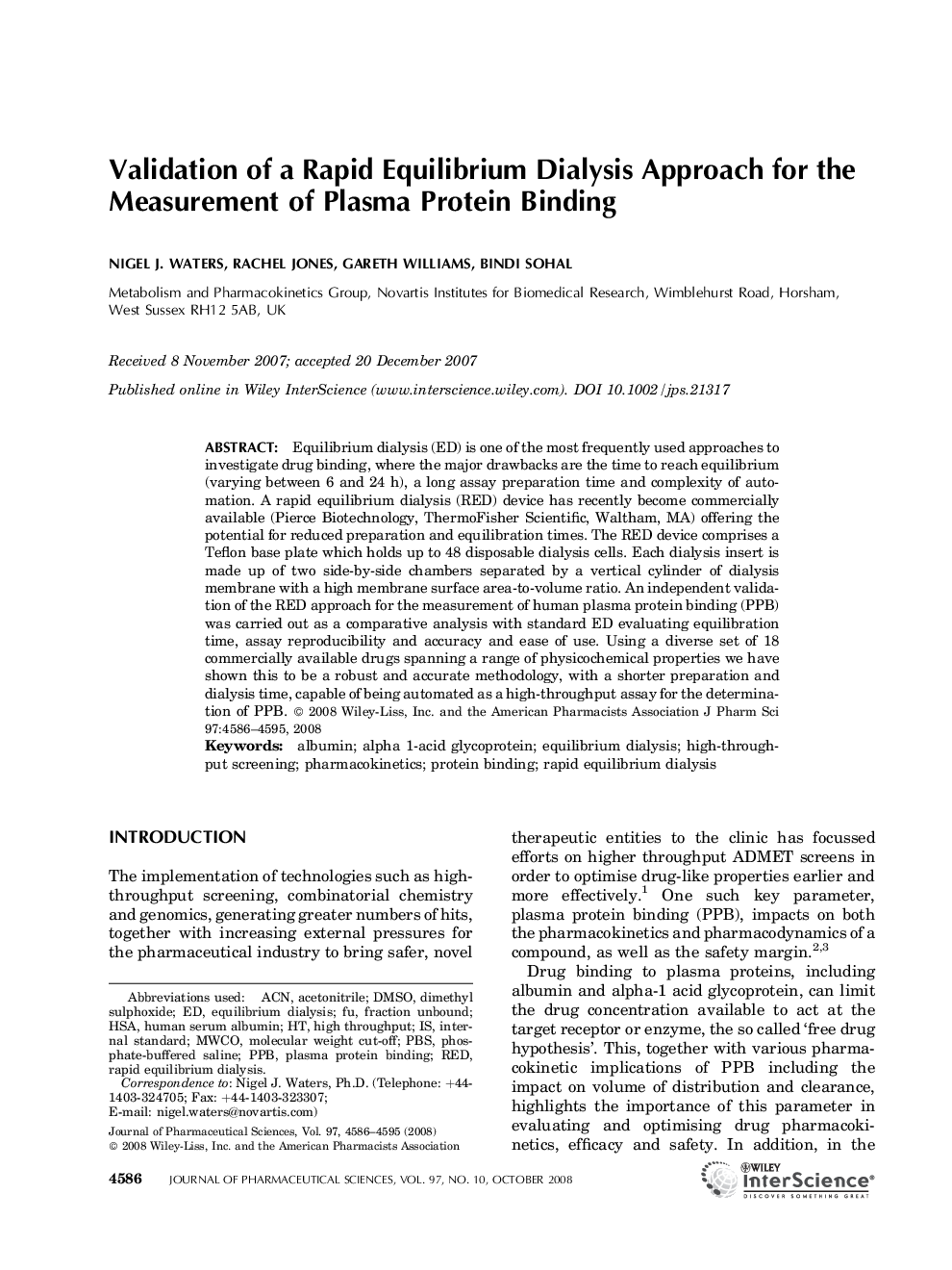| Article ID | Journal | Published Year | Pages | File Type |
|---|---|---|---|---|
| 2485352 | Journal of Pharmaceutical Sciences | 2008 | 10 Pages |
Abstract
Equilibrium dialysis (ED) is one of the most frequently used approaches to investigate drug binding, where the major drawbacks are the time to reach equilibrium (varying between 6 and 24 h), a long assay preparation time and complexity of automation. A rapid equilibrium dialysis (RED) device has recently become commercially available (Pierce Biotechnology, ThermoFisher Scientific, Waltham, MA) offering the potential for reduced preparation and equilibration times. The RED device comprises a Teflon base plate which holds up to 48 disposable dialysis cells. Each dialysis insert is made up of two side-by-side chambers separated by a vertical cylinder of dialysis membrane with a high membrane surface area-to-volume ratio. An independent validation of the RED approach for the measurement of human plasma protein binding (PPB) was carried out as a comparative analysis with standard ED evaluating equilibration time, assay reproducibility and accuracy and ease of use. Using a diverse set of 18 commercially available drugs spanning a range of physicochemical properties we have shown this to be a robust and accurate methodology, with a shorter preparation and dialysis time, capable of being automated as a high-throughput assay for the determination of PPB. © 2008 Wiley-Liss, Inc. and the American Pharmacists Association J Pharm Sci 97:4586-4595, 2008
Keywords
Related Topics
Health Sciences
Pharmacology, Toxicology and Pharmaceutical Science
Drug Discovery
Authors
Nigel J. Waters, Rachel Jones, Gareth Williams, Bindi Sohal,
